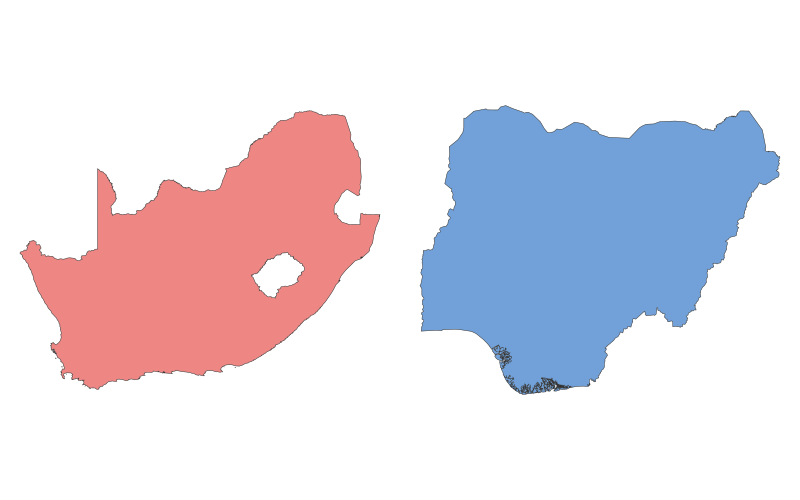South Africa vs. Nigeria: A Geographical Comparison

Comparison Table
| Category | South Africa | Nigeria |
|---|---|---|
| Location | Southern Africa, bordered by the Atlantic and Indian Oceans | West Africa, bordered by the Gulf of Guinea |
| Size | 1,221,037 km² | 923,768 km² |
| Climate | Varied: temperate, Mediterranean, arid | Tropical: equatorial in south, arid in north |
| Natural Resources | Gold, diamonds, platinum, coal | Oil, natural gas, tin, iron ore |
| Urban Development | Highly developed cities (e.g., Johannesburg, Cape Town) | Rapid urbanization (e.g., Lagos, Abuja) |
| Transportation | Advanced road/rail networks, major ports | Growing infrastructure, congested cities |
Description
South Africa
South Africa, located at the southern tip of the African continent, is known for its diverse landscapes, from the savannas of Kruger National Park to the urban sprawl of Johannesburg. Historically shaped by colonialism and apartheid, it has a multicultural society with 11 official languages. The economy is the most industrialized in Africa, driven by mining, manufacturing, and tourism. Cape Town and Durban are key coastal hubs, while Pretoria serves as the administrative capital.
Nigeria
Nigeria, Africa’s most populous country, is a West African powerhouse with a vibrant cultural heritage, including Yoruba, Igbo, and Hausa influences. Its economy relies heavily on oil exports, though agriculture and tech sectors are growing. Lagos, the largest city, is a bustling commercial center, while Abuja is the planned capital. Challenges include infrastructure gaps and regional inequality, but its youthful population and creative industries (e.g., Nollywood) fuel dynamism.